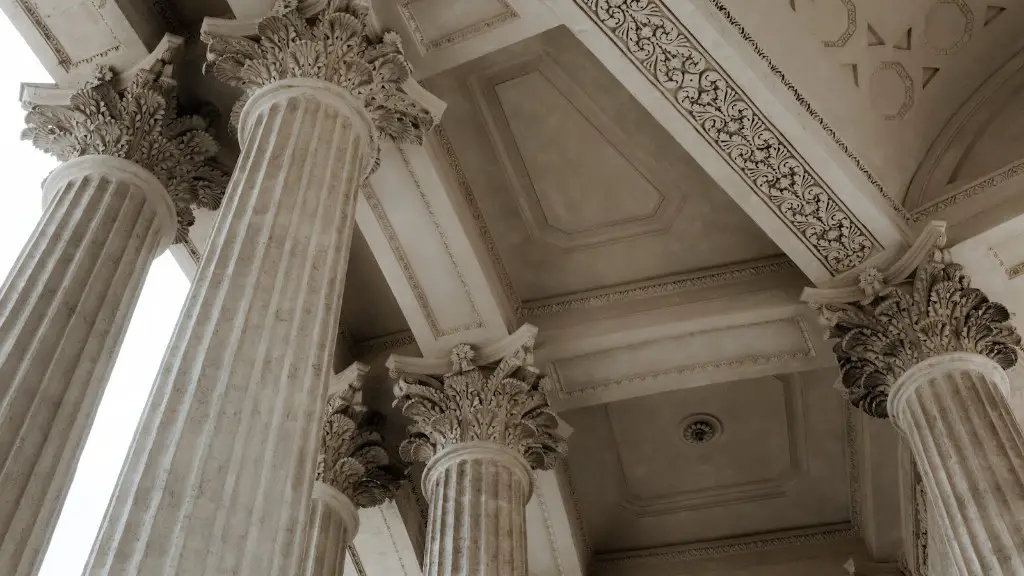What is master planning in architecture? It is the process of creating a physical plan that can influence the way an entire city, town, village, or other development evolves over time. Master planning is often seen as an important component of urban design, as it ensures that the different land uses, public spaces, infrastructure and resources in a region are carefully balanced. A successful master plan should create seamless transitions between districts and ensure the opportunities for growth are properly taken advantage of.
There are several core elements to a master plan. The first is a zoning plan, which allows for the creation of districts for specific land uses. For example, there may be areas for residential housing, office spaces, parks, and other recreational sites. The next step is creating a transportation network which links these districts together and provides easy access to the rest of the city. Finally, some form of environmental protection law or resource management plan may also be incorporated, ensuring that the natural elements of the city are preserved and that the environment is not harmed by the development process.
A well-crafted master plan has a number of advantages. It ensures that the infrastructure of a development is properly taken advantage of and that different land uses are well-integrated. In addition, it gives communities a blueprint for what the future of their town will look like, allowing them to make better decisions about how to develop the area. Master planning can also help with the sustainability of a region, ensuring that resources are not wasted and that any development is done with consideration for the environment.
One key element of master planning is that it must account for the diversity of interests of those living in or working in the area. Different populations have different needs and opinions about how their city should be developed. As such, a master plan must take into account the wishes of various stakeholders, such as community members, local businesses, and government agencies. This is done by drawing up an appropriate zoning plan, creating a well-designed transportation network, and designing green spaces to accommodate leisure activities and activities of local communities.
Creating a master plan can be a difficult process. Different stakeholders may have varying opinions and visions of what the final plan should ultimately look like. As a result, it can be difficult to achieve a consensus. In addition, a master plan is often a long-term project, and so there is always a risk of unforeseen factors coming into play and influencing the end result.
Experts in this field advise that the best way to ensure a successful master plan is to focus on collaboration and consultation. Creating a plan requires the participation and input of all stakeholders. It is important to keep everyone’s views in mind and to involve them in the decision-making process. This helps to create a sense of ownership and ensures that all opinions are taken into account.
Techniques Used in Master Planning
When creating a master plan, there are a number of techniques that can be employed. The first is to focus on creating connections between different districts and neighbourhoods in the development, such as by creating green spaces, foot paths, and other public facilities that can be used by the local community. Another technique is to ensure that public infrastructure, such as roads and utilities, are properly taken into account. This includes ensuring that sufficient public transport is available so that people can move around the area easily.
Finally, an important aspect of any master plan is to ensure that there is an effective system of resource management, such as that which comes with using environmentally friendly practices. This ensures that resources are used sustainably, such as through properly integrating renewable energy sources and water conservation strategies. This can also help to reduce the environmental impact of the development.
The Benefits of Master Planning
The key benefit of a well-crafted master plan is that it creates the opportunity for long-term growth and development. By considering all stakeholder needs, a master plan can create a cohesive vision for the future of a development. This not only creates a sense of harmony and community but can also drive economic, social, and environmental benefits. As such, there are many benefits to be gained from properly creating a master plan.
Creating a master plan is also beneficial as it provides a clear roadmap for what should happen when the development gets off the ground. This helps to ensure that there is less risk of costly delays or miscalculations, as there is sufficient time to plan and prepare. This will help to ensure that the development is effectively managed, and unnecessary costs are avoided.
Managing Master Plans
Once a master plan has been created, it is important to ensure that it is properly carried out. This means that progress should be monitored to ensure that the plan is being followed as it should be. In addition, changes to the plan should be communicated to all of the relevant parties. This includes those who will be affected by the changes, such as local authorities, businesses, and community groups.
Finally, it is important to ensure that the plan is kept up-to-date. As the development of an area proceeds, the plan should be adjusted to reflect the changes taking place. This ensures that the master plan remains relevant, allowing for proper planning and making sure that the initial goals of the plan are met.
The Role Of Architects In Master Planning
Architects play an important role in creating a successful master plan. This is because they are the ones responsible for actually designing the physical elements of the development. As such, they will provide valuable insight into the most suitable layout and design of the infrastructure, buildings, and spaces. This helps to ensure that the plan is properly harmonised with the surrounding environment, taking into account the context of the location.
Therefore, when creating a master plan, it is important to consult with architects to ensure that the desired aims of the plan are met. This includes ensuring that the development is attractive and integrated with the existing environment, and that any environmental considerations are taken into account, such as through installing renewable energy sources.
Essential Considerations for Master Planning
When creating a master plan, there are a few essential points to consider. Firstly, is the plan appropriate for the local context? What are the key needs of the stakeholders, and have these been accounted for in the plan? Secondly, is the plan well-designed and do the elements proposed make sense in relation to each other and the wider environment? Furthermore, is there sufficient consideration of sustainability, taking into account resource management and environmental protection? Lastly, is there an appropriate mechanism in place to manage the plan?
These considerations are essential when creating a master plan. By taking the appropriate steps, a developer can ensure that their plan is well-crafted and suitable for the project. By doing so, it is possible to create a master plan that is both effective and efficient, thereby ensuring the future success of the development.




